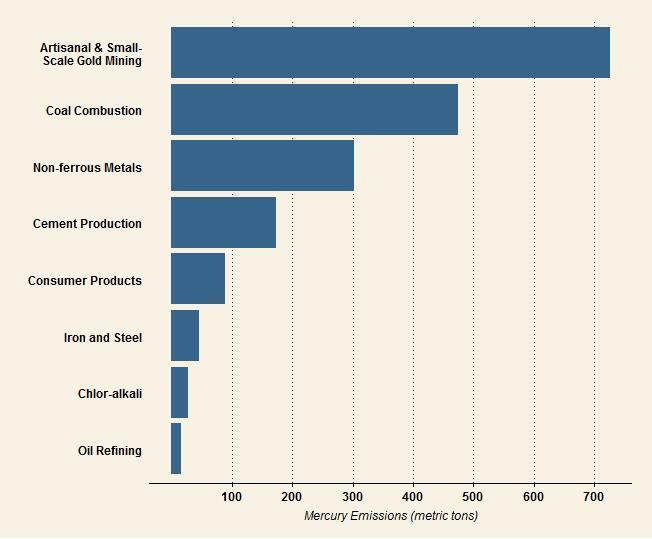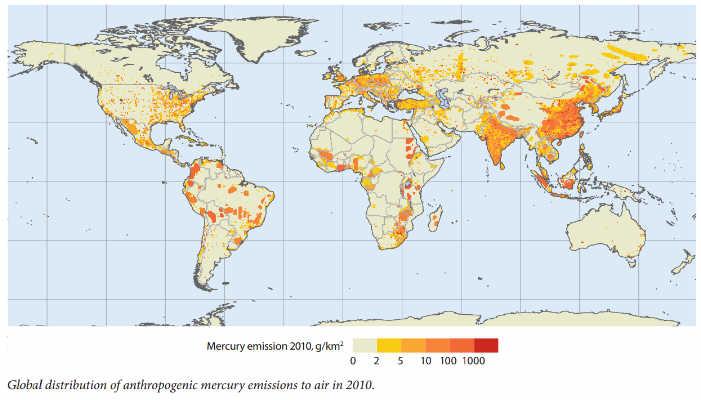Mercury Emissions: The Global Context
Mercury emissions are a global problem that knows no national or continental boundaries. Mercury that is emitted to the air can travel thousands of miles in the atmosphere before it is eventually deposited back to the earth in rainfall or in dry gaseous form.
Types of Sources
Natural sources of mercury include volcanic eruptions and emissions from the ocean. Anthropogenic (human-caused) emissions include mercury that is released from fuels or raw materials, or from uses in products or industrial processes.
Some of the mercury circulating through today's environment was released years ago. Land, water, and other surfaces can repeatedly re-emit mercury into the atmosphere after its initial release into the environment. We know that anthropogenic emissions continue to add significantly to the global pool of mercury.
Globally, artisanal and small-scale gold mining is the largest source of anthropogenic mercury emissions, followed closely by coal combustion. Other large sources of emissions are non-ferrous metals production and cement production. (United Nations Environment Programme, Global Mercury Assessment, 2013)

Mercury emissions from the eight highest emitting industry sectors. Data for 2010 from the 2013 UNEP Global Mercury Assessment Exit. Total estimated global anthropogenic mercury emissions are 1960 metric tons.
Worldwide Emissions
How much mercury is emitted worldwide each year? Recent estimates of annual global mercury emissions from both natural and anthropogenic sources are in the range of 5,000 to 8,000 metric tons per year. These estimates include mercury that is re-emitted. The world map below provides information about the worldwide distribution of anthropogenic mercury emissions.

Global distribution of anthropogenic mercury emissions to air in 2010
Learn More
- For more information on regulatory and policy measures that EPA is taken to reduce mercury pollution, see the EPA Mercury Portal.
- Learn about EPA's International Actions Reducing Mercury Emissions and Use.
Contacts
For additional information on EPA's work with mercury, contact:
Rodges Ankrah
U.S. Environmental Protection Agency
Office of International and Tribal Affairs (2670R)
1200 Pennsylvania Ave., NW
Washington, DC 20460
E-mail: ankrah.rodges@epa.gov
(202) 564-0280
